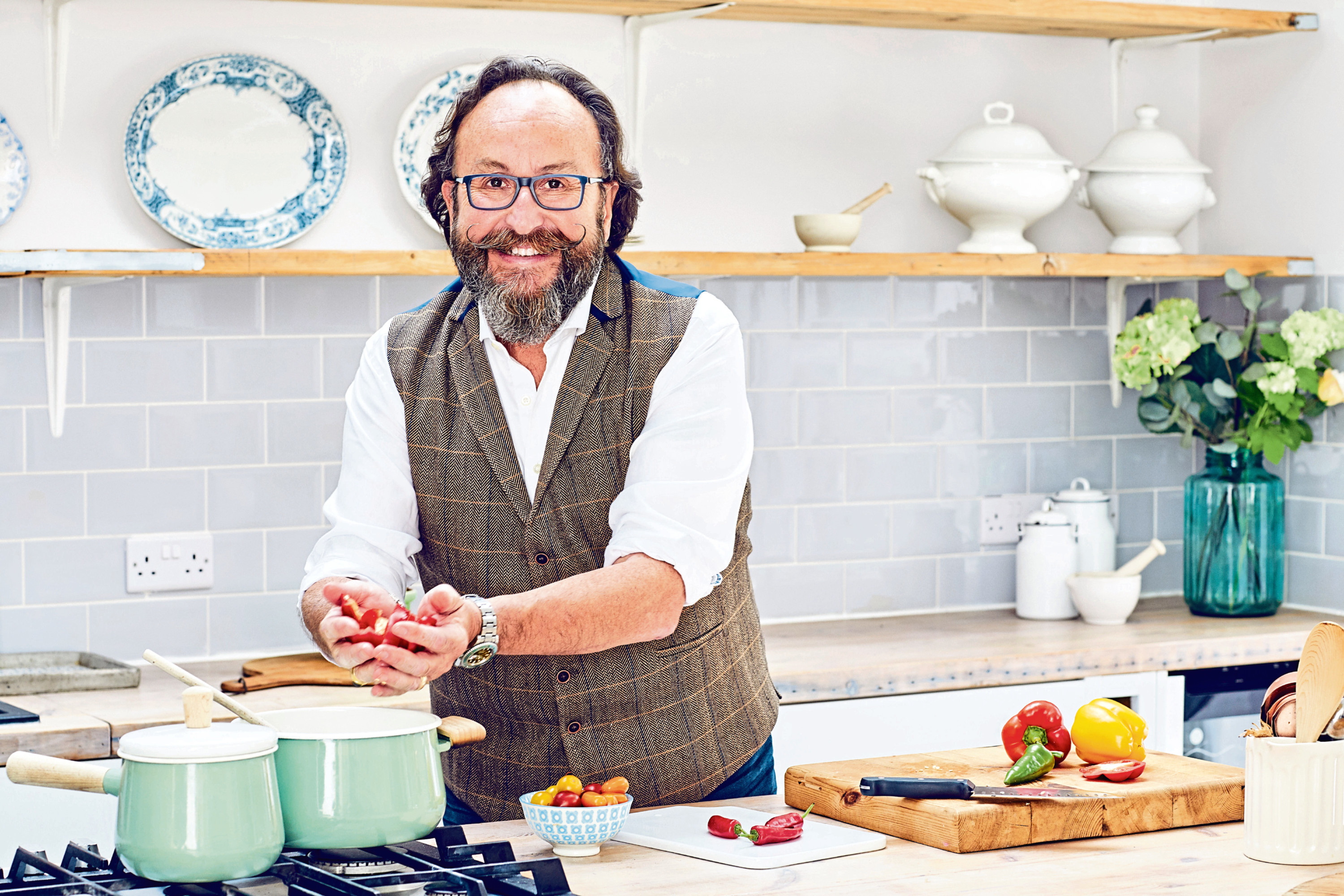
DAVE MYERS mistook the first signs of eye disease as the after-effects of a night on the ale.
The much-loved TV chef was having one of his regular check-ups when his optician told him she thought he might have glaucoma.
But one half of the Hairy Bikers admits: “I told her: ‘I don’t think so, I had a bit of a night last night so I’ve probably just got a bad hangover.’
“But she took no notice and referred me to my GP who made a hospital appointment. And she’d been right.
“The first symptoms of glaucoma were setting in. I was devastated. If it hadn’t been spotted so early, the results could have been catastrophic.
“Si King – my fellow Hairy Biker – and I had just lost three stones each in a bid to get fit. I’d gone from being pre-diabetic with high blood pressure to being off all medication and feeling great.
“I was shocked. I was 54 and thought only old people suffer from this condition. Interestingly, diabetes and high blood pressure can make you more prone to glaucoma.
“Thankfully, it was spotted during a routine eye test but if it had gone unnoticed, I could have gone blind and that would have had a huge impact on how I do the job I love so much.
“Life was being good to me at the time. I’d got married and my career was going great guns. As a chef, my sense of taste and smell are extremely important but of all the senses, sight is the one I’d fear losing most.
“Like so many people, my career is my passion and it’s so hard to be able to imagine doing all the things I love to do if I couldn’t see, whether that’s riding my bike, reading an autocue or preparing ingredients.
“The thought that I could have lost my sight is really scary. As we get older, lots of things need close attention, not least our eyes.
“I put a drop in each eye last thing at night. That’s no real hardship and is something I do punctiliously.”
Dave now has an annual eye check-up at the hospital and visits his opticians every other year and urges others to do the same.
“It doesn’t hurt and it just might – as it did for me – save you from potential blindness.
“With glaucoma, there are no symptoms. It’s no accident it’s known as the silent thief of sight. By the time you’re aware of it, you may have intense eye pain, nausea, vomiting and blurred vision.
“Luckily, I’ve worn glasses since I was eight and have always had regular check-ups. Most of us go to the dentist once a year so why are we so slack about a simple eye test?”
Dave’s about to embark upon an epic road trip across British Columbia with best buddy Si and says: “That wouldn’t be possible if my early-onset glaucoma had gone unchecked. I’m on an incredible journey and I don’t want it to end.”
Glaucoma is a common eye condition in which the optic nerve, connecting the eye to the brain, becomes damaged.
People in their 70s and 80s are the most likely to be affected but anyone can suffer from it and it can build up slowly over the years, making it difficult to detect outside a trip to the opticians.
The record number of older people in employment are being urged to make their eye health a priority as pension entitlement ages increase.
Official figures show that there are now more than 1.2 million Brits over the age of 65 working, with a further half a million expected to be in employment by 2030 as people continue to live longer and healthier lives.
As the over-65s are almost twice as likely to develop an eye health condition such as glaucoma or cataracts, that could significantly hinder their ability to do their job effectively.
As a result, Specsavers and eye-health charity the Royal National Institute of Blind People (RNIB) are campaigning to urge Britain’s ageing workforce to take their eye health seriously.
With research showing that one in four people are not having an eye test every two years, as recommended by the College of Optometrists, Dave Myers is backing that campaign.
Specsavers founder Doug Perkins, 75, an optometrist of more than 50 years who co-runs the joint-venture family business, says: “More needs to be done to make eye health a priority in the UK.
“Britain’s baby-boomers are finding a new lease of life in the workplace. However, ageing can come hand in hand with various ailments that, if left untreated, could cause sight loss.
“An eye test can help detect conditions including age-related macular degeneration (AMD), diabetic retinopathy, glaucoma and cataracts.
“It also provides a window on wider health, helping spot indicators of other issues, such as diabetes, that could hinder older people from working as long or as effectively as they might want to.”
Dave Myers is an ambassador for Specsavers and RNIB. For more information or to book your free eye test, visit www.specsavers.co.uk


Enjoy the convenience of having The Sunday Post delivered as a digital ePaper straight to your smartphone, tablet or computer.
Subscribe for only £5.49 a month and enjoy all the benefits of the printed paper as a digital replica.
Subscribe